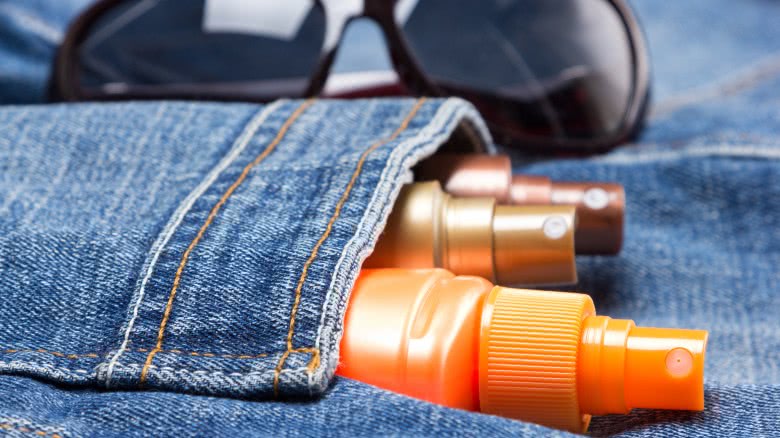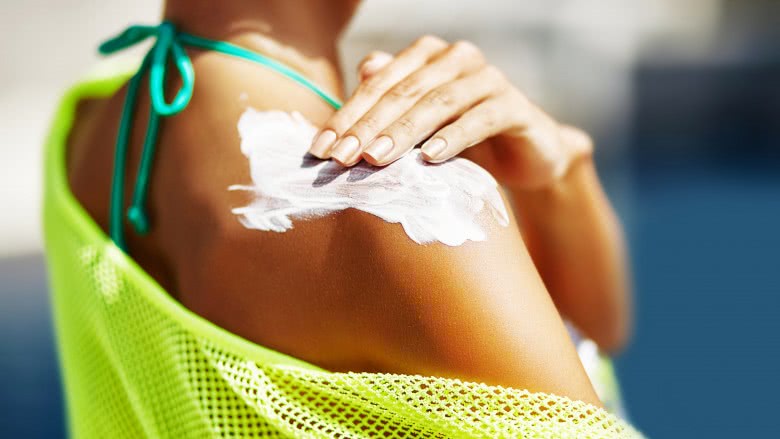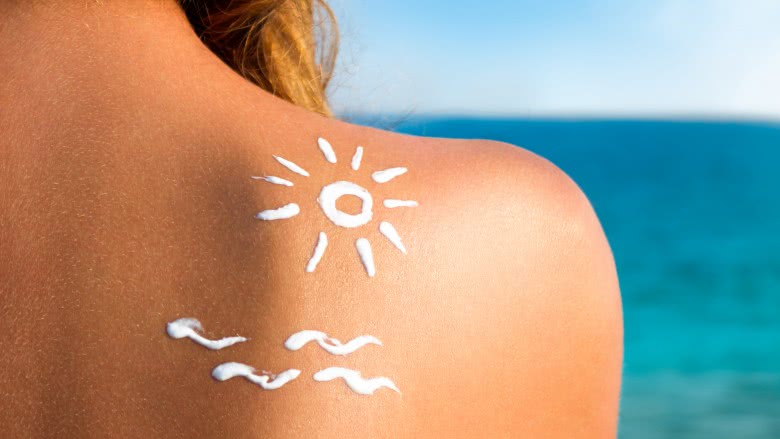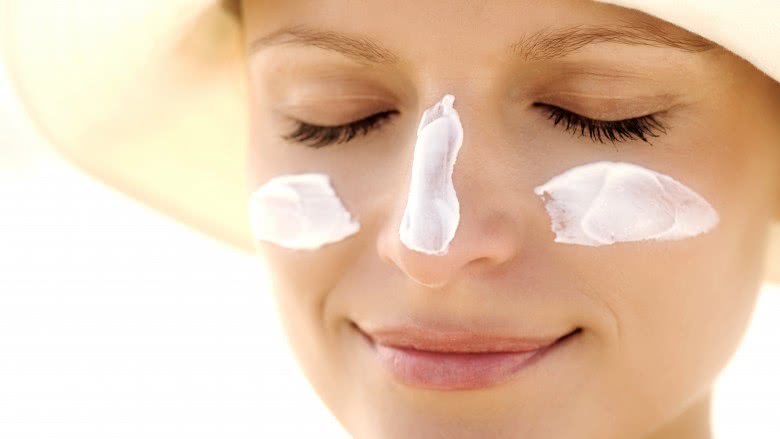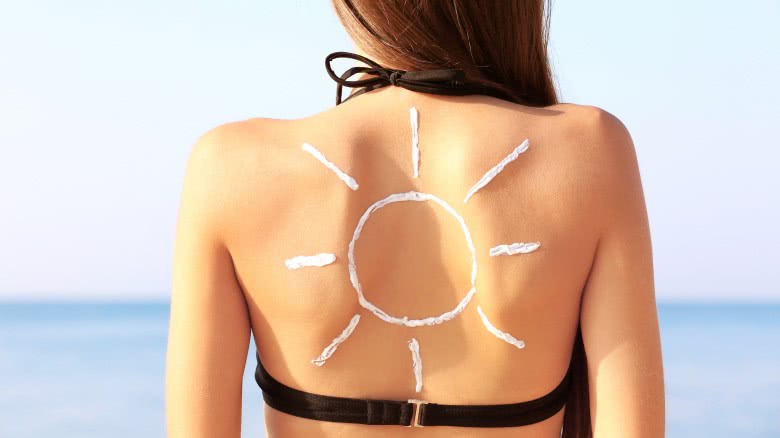False Facts You Believe About Sunscreen
It's getting to that time of year — jackets are shedding, pant lengths are shortening, and beauty writers hammer you with sunscreen articles. You probably feel like you've seen them all and know everything you need to know. However, some of what you believe may not actually be the truth. That is why we wanted to set the record straight, once and for all. I spoke with three top dermatologists to get the average misconceptions people have about sunscreens. See what they said to make sure you're not one of the false believers.
All sunscreens are created equal
There's, of course, a difference in sunscreens based on SPF (or Sun Protection Factor) levels, which we'll get into later. However, there's also a difference when it comes to the ingredients in sunscreens and how they relate to ultraviolet (UV) rays. There are two categories of sunscreens: chemical and physical. "Chemical sunscreens are absorbed into the skin where they absorb UV rays," explained Dr. Jessica Weiser of New York Dermatology Group. "Most chemical sunscreens act as a filter and still allow some UV to enter and damage the skin." She further explained that these chemical sunscreens require 20-30 minutes to become active. Meaning you have to apply any chemical sunscreens 20-30 minutes before heading outside.
As for the physical sunscreen, they create an actual, physical barrier on the skin so not to allow any UV rays to penetrate. "Typically, physical sunscreen contains either zinc oxide or titanium dioxide," Dr. Weiser explained. "These physical products work immediately on contact."
She also noted that physical sunscreens can cause less irritation since most contain just one active ingredient. "Many of the chemical ingredients are not stable on their own, so many ingredients must be combined together to make an adequately broad-spectrum stable product."
The best sunscreens are the ones that are more natural
With all that being said about physical versus chemical sunscreens, that doesn't mean that more "natural" option — those using zinc oxide or titanium dioxide — is necessarily better. "These are not the best sunscreens," said Dr. Ronald Moy. He explained that a recent Consumer Report showed that 43 percent of all sunscreens were "inadequate" due to their inability to perform to their slated SPF rate.
"These 'inadequate' sunscreens were almost all 'natural' sunscreens containing only zinc oxide and titanium dioxide," he said. "The chemical sunscreens containing ingredients like Avobenzone or Mexoryl, or Oxybenzone were much more effective at blocking all wavelengths of sunlight and performing as a broad spectrum sunscreen."
Skin cancer and SPF specialist Dr. Craig Kraffert agrees with Dr. Moy. "The most common misconceptions about sunscreens is that chemical sunscreens could cause cancer and should be avoided," he said. "Chemical sunscreens are the best sunscreens for protecting the skin." So it's up to you to figure out which is best for you and your skin. Consult your dermatologist if you're concerned.
Sunscreen blocks all of the sun
Dr. Moy points out that a lot of time, sunscreens give a false sense of security. "People believe that sunscreens are so good that we are not getting any DNA damage," he explained. "Sunscreens block only a percentage of the light damaging the skin over a day."
So just be aware, sunscreen is not completely and totally effective in blocking sunlight. Only avoiding the sun completely or wearing sun-protective clothing can do that.
White residue on the skin means you're plenty covered
We've all been there, where we think the pasty white residue on our skin means our skin is so completely shielded that we'll never get any sun damage. Not true. A white residue could mean something as simple as you aren't rubbing it in enough or are using a physical sunscreen with only zinc oxide and or titanium dioxide.
"Correct application of a chemical sunscreen should not give a white pasty look but should rub in so that the sunscreen is invisible," confirmed Dr. Moy.
Wearing a higher SPF provides significantly better protection for longer
You're protecting against more than simply "the sun" when you wear sunscreen. Technically, you're protecting against both UVB and UVA rays. While UVB rays are the ones responsible for sunburns, UVA are the ones that create long-term skin damage.
The SPF number is simply a reflection of the UVB ray protection. For protection of UVA rays, you have to look at the broad spectrum. "Broad Spectrum is a simple statement that indicates that the product has met a certain threshold for UVA protection," explained Dr. Kraffert. "Broad Spectrum is important in minimizing sun damage and melanoma risk."
So while a higher number doesn't hurt, you want to pay attention to both the SPF and broad spectrum number. A higher SPF also doesn't mean that it protects the skin longer, you still need to reapply regularly confirmed Dr. Moy.
Wearing SPF in a tanning bed protects your skin
"There is no circumstance under which tanning beds are safe," exclaimed Dr. Wesier. "Tanning beds emit mostly UVA-1 rays which are the most difficult rays to protect against."
She explained that zinc oxide can protect these rays from deeply penetrating and creating lots of damage, however, there's no way to fully block them using any type of sunscreen product — chemical or physical. So the safest answer to tanning beds is just to avoid them at all costs.
Sunscreen clogs pores and causes acne
We've all heard this one before, especially if you have acne-prone skin. While it can be true in some cases, it's not true for all sunscreens on the market. "There are many sunscreens on the market that are safe, effective, and non-comedogenic," explained Dr. Wesier. For instance, micronized zinc oxide in small particles does not cause occlusion or lead to acne breakouts.
She also pointed out that those who use acne medication such as retinoids or oral antibiotics are more sensitive to the sun and are more likely to burn. Therefore, it is key that acne-prone skin types using these types of medications should consistently wear sunscreen. You just have to find the best one for you.
"Titanium dioxide has been shown in some circumstances to be slightly more comedogenic," Dr. Wesier explained. "Therefore acne-prone patients should ideally tend towards zinc based products."
You only need sunscreen on sunny, summer days
You may have heard beauty writers and editors stress the importance of wearing sunscreen every day before. However, people still don't believe that going SPF-free on cloudy fall days will cause any harm. However, that is completely false.
"Sun damage is cumulative and exposure occurs year-round," explained Dr. Kraffert. "Repetitive unprotected brief sunlight exposures cause significant cumulative damage and skin aging."
Therefore, it is not just those bad July beach-day sunburns that are damaging your skin it's also the day-to-day exposure. For instance, Dr. Kraffert mentioned that clinical practice has suggested that people don't apply enough sunscreen while driving. "There's been more skin cancer or damage on the left side of the face." He also pointed out that most ultraviolet rays penetrate clouds. So even if it looks like you don't need it, apply it. Better safe than sorry, right?
Understanding how to protect your skin
As Dr. Kraffert put it, "Sunscreen is a tool. The challenge is not sunscreen itself. The real issue is that optimal sun protection is an ongoing work project. It pays off in amazing ways – but requires diligent faithful product application over a lifetime."
You always knew sunscreen was important, living in the 21st century and all. However, using the "tool" correctly is just as important as using the tool at all. So just make sure you get your facts straight and understand the best way to protect your skin.


